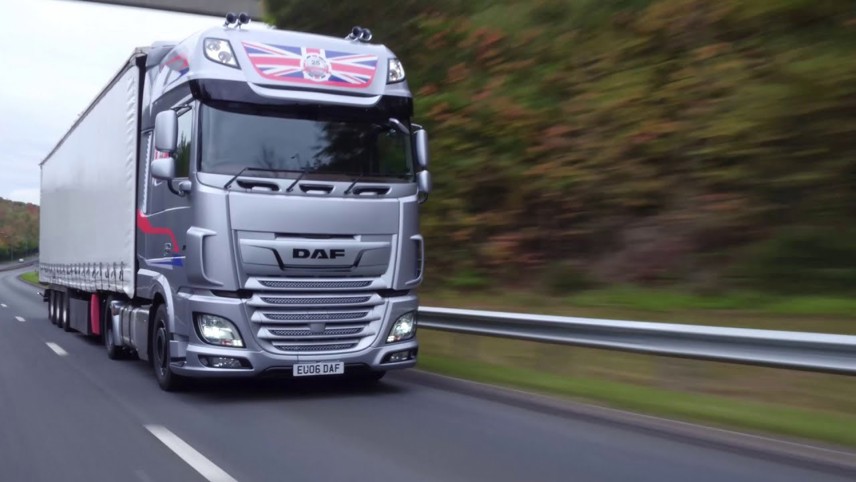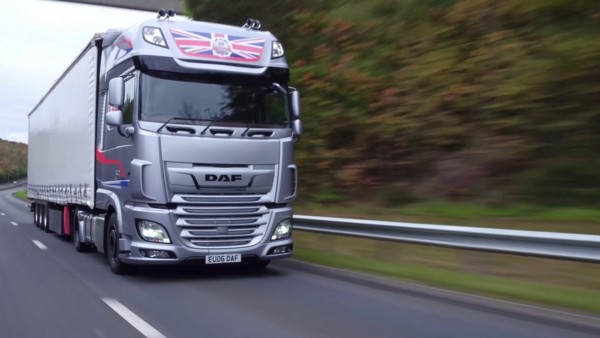Review
Niche markets in tractors and semi-trailers are many and varied, but one specific sector – low deck tractor units – now has a new player, Daf Trucks. The low deck market is not high volume. In fact, it is relatively low in the UK with Daf Trucks putting it at around just 100 to 150 units.
At first glance, this looks so small it’s hardly worth producing a bespoke product. But, if you look across the whole of Europe, this rises to between 3,500 and 5,000 units annually, making this a viable market worthy of the attention.
The sector has two or three key road transport operations, mainly in the entertainment and exhibition markets as well as music tours and outside broadcasts, mainly dominated by a handful of companies such as Fly by Nite, Stardes and Stagetruck. Other sectors include parcel, furniture delivery and automotive delivery, with the likes of DPD, DFS and Ontime logistics as potential customers.
As one might deduce, low deck tractors have to be relatively low compared with the industry standard, allowing for the essential ability to haul goods under the four-metre maximum height when travelling across Europe. Of course, if you are travelling across Europe you will also need to negotiate the often challenging approach and departure angle needs of the cross-Channel ferries. Perhaps the largest payoff of running a low deck tractor unit in keeping under the four-metre height is the ability to operate trailers capable of load volumes up to 100m3.
With all this in mind, we were invited to test drive a XF 530 low deck to see how it performs and check out the specification.
The low deck XF has virtually the same line-up as the standard unit although there’s just one power setting on the Paccar MX11 rated 456PS and 2,300Nm of torque @ 900 rpm. The three remaining power settings are all based around the Paccar MX-13, starting at 436PS and 2,300Nm of torque @ 900rpm, 487PS and 2,500Nm of torque @ 900rpm and, finally, the top of the range 537PS with 2,600Nm of torque @ 1,000rpm.
Sitting behind both the MX-11 and MX13 is a choice of either the very familiar ZF Traxon 12-speed automated gearbox with a direct final drive, or the rather less popular ‘old school’ ZF 16-speed Ecosplit with an overdrive final gear.
Within the XF low deck family there is a two-axle 4x2 (FA), 6x2 rear steer (FAN), 6x2 rear single wheel (FAR) and 6x2 twin wheel (FAS), which should cover most of needs of low deck operators.
The Daf XF has two basic versions of the low deck, one offering a fifth wheel load height of 96cm. If that’s not low enough, Daf can reduce this to 91cm by ‘fine-tuning’ a couple of components.
Both models feature an optional chassis protection beam, preventing direct contact between the chassis and the lower front edge of the semi-trailer when driving up or down a loading ramp. They also carry up to 1,215 litres of fuel, and an exhaust aftertreatment system rotated through 900. Finally, there is a choice of a 3,800mm wheelbase with a 3,600mm also on the 96cm model.
The 96cm model features:
- Leaf or air suspended front axle (8t)
- Front axle tyres: 315/60, 355/50, 375/45 or 375/50R22.5
- Rear axle tyres: 295/60, 315/60, 295/55, 315/45R22.5
- 50mm fifth wheel + 12mm mounting plate
- 190mm ground clearance
- 75cm suspension travel
The 91cm model features:
- Leaf or air suspended front axle (8-tonne)
- Front axle tyres; 375/45R22.5
- Rear axle tyres; 315/45R22.5
- 140mm fifth wheel
- 140mm ground clearance
- 50mm suspension travel
On the front axle there is the choice between a Daf Axle 163N steel single leaf parabolic suspension rated at eight tonnes and lower than the standard. Perhaps the more useful is the Daf Axle 161N which has an electronically controlled two bellows air suspension, again rated at eight tonnes. This allows the front axle to be lowered 70mm to a maximum raised position of 130mm, or 200mm in total.
On our test 4x2 tractor unit, the revised rear suspension sits above four air bellows on two new parallel reaction rods and a triangle reaction rod. Obviously more bellows are on the three-axle variants, which, when linked to an air suspended front axle, offer the greater flexibility.
Daf also has other clever chassis features such as tyre compression compensation which increases the chassis height dependent on the load taken by the axle therefore compensating for the tyre compression. In reality, this equates to up to 10mm on the front air suspended axle and up to 25mm on the rear, on the FT low deck.
Of course, manoeuvrability with such a low chassis height is always a factor and the Daf engineers have thought of this by electronically developing a ‘manoeuvring mode’, again on the FT Low Deck.
This increases the chassis height to maintain clearance between the semi-trailer front edge and the tractor chassis ramps at the front by up to 50mm and the rear up to 60mm (laden) or 85mm (unladen) and/or by up to 35mm (laden) or 60mm (unladen) on 315/45R22.5 tyres. The manoeuvrability mode is activated via a switch on the dashboard at a vehicle speeds below 20mph and is deactivated automatically at speeds over 20mph.
Our cab was the top-of-the-range Super Space, with automatic climate control and an ECAS remote control with illuminated buttons for various functions including four memory buttons for pre-set chassis heights. Inside the double bunk cab, it is furnished with a series of black and tan leather exclusive trims mainly around the door covering, high backed air suspended, heated driver’s seat with active ventilation and soft-feel leather steering wheel with double stitching.
Standard warranty is one year complete vehicle plus breakdown and second year driveline. Daf also offers a three-year maintenance package to a maximum miles of 300,000.
Daf Trucks’ engineers have taken a good look at the requirements of low deck customers. Consequently, the XF has been fine-tuned to their needs and, ultimately, makes a great case to be in the melting pot when a low deck tractor is needed.

















